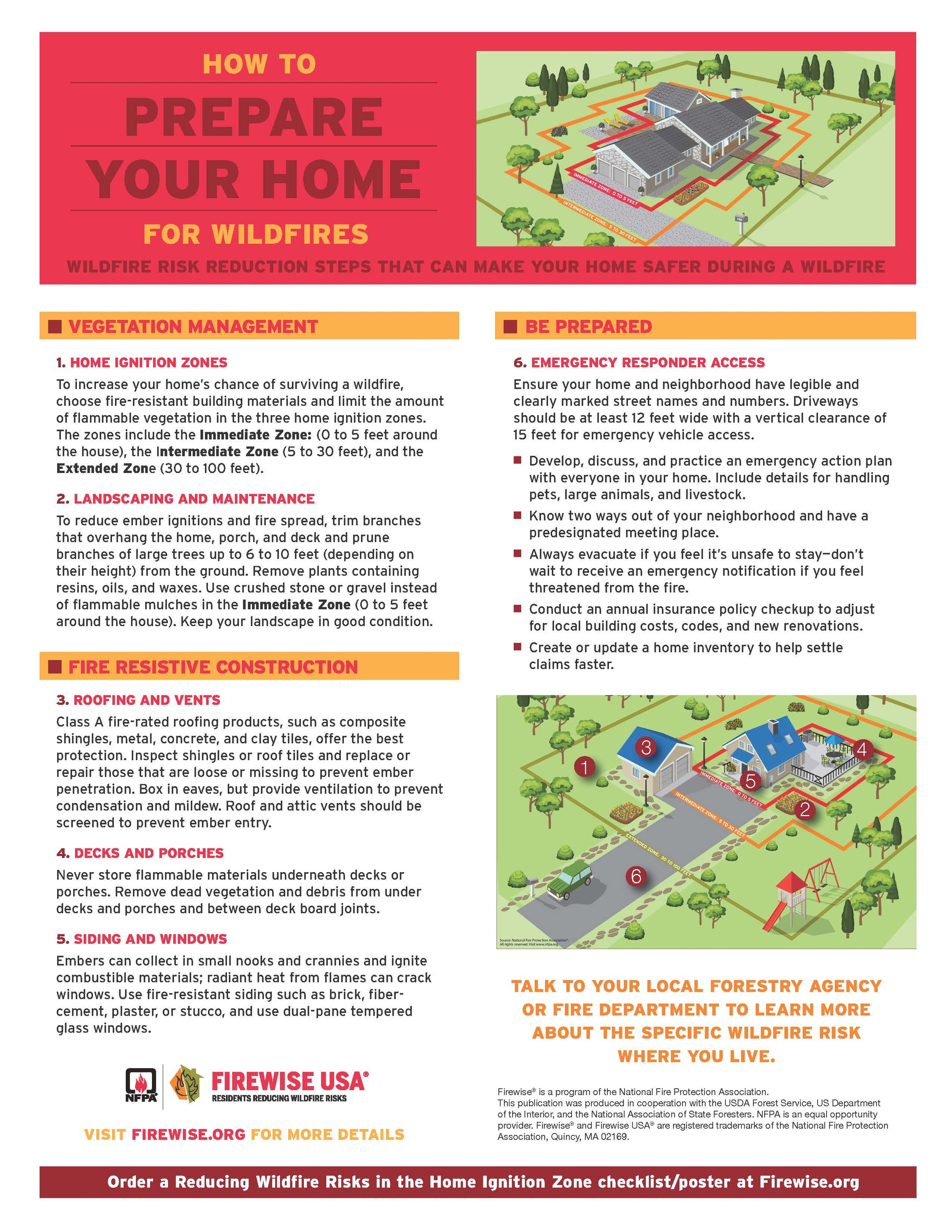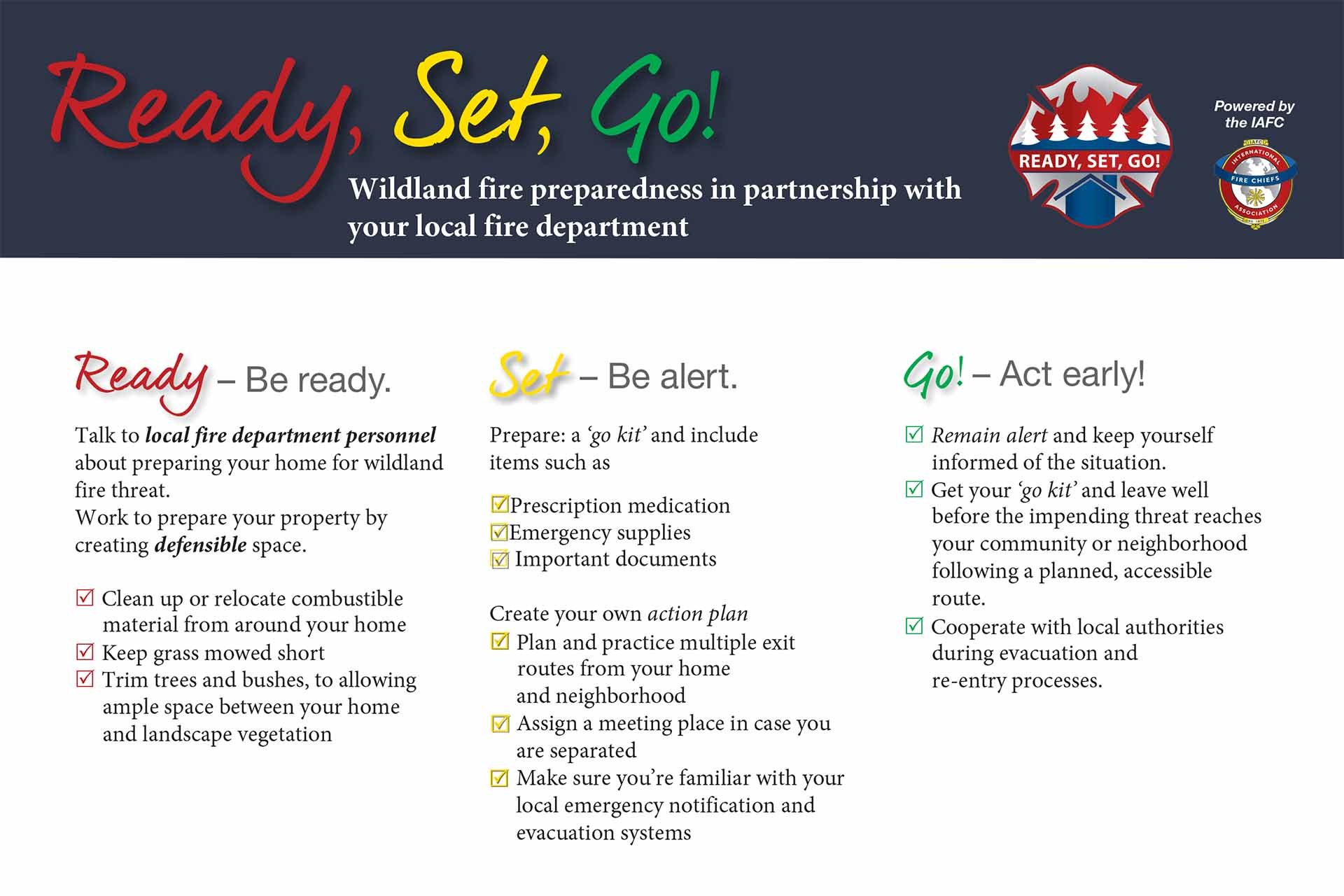Fire Prevention & Safety
It’s no secret that the Mountain Communities Fire Protection District (MCFPD) is at risk for wildland fires. The Mountain Communities Volunteer Fire Department (MCVFD) works diligently to protect our districts, but there are plenty of things that residents can do to be proactive and protect themselves and their property in the event of a wildfire.
Property Mitigation
 The majority of homes ignite during wildfires from small flames and embers (burning pieces of airborne wood and/or vegetation) that can travel more than a mile. Property mitigation up to 200 feet from the foundation can help your home withstand embers and reduce the spread of flames. Some things you can do to mitigate your property include:
The majority of homes ignite during wildfires from small flames and embers (burning pieces of airborne wood and/or vegetation) that can travel more than a mile. Property mitigation up to 200 feet from the foundation can help your home withstand embers and reduce the spread of flames. Some things you can do to mitigate your property include:
- Trim branches that come within 5 feet or overhang your home, porch, and deck
- Prune large branches around your property up to 6-10 feet from the ground
- Clear pine needles, dead leaves, or any other fuel sources from your gutters, roofline, deck, porch, patio, and along fencelines
- Remove flammable materials (woodpiles, spare lumber, vehicles, boats, etc) within 30 feet of your house
- Screen vents or openings to keep embers out
- Use Class A fire-rated roofing products and fire-resistant siding
Source: firewise.org
 No one wants to think about having to evacuate, but it's very much a possibility within our distict. Fortunately, there are several things that you can do to prepare for an evacuation and ensure that first responders can access and protect your home:
No one wants to think about having to evacuate, but it's very much a possibility within our distict. Fortunately, there are several things that you can do to prepare for an evacuation and ensure that first responders can access and protect your home:
- Have legible, reflective address numbers on your home
- Make sure your driveway is at least 12 feet wide with a vertical clearance of 15 feet for emergency vehicle access
- Develop, discuss, and practice an emergency action plan with everyone in your home — including care/relocation details for pets and livestock
- Establish a designated meeting place for you and your loved ones, and know two ways out of your neighborhood
- Gather necessary items together in an easy-to-grab location in the event that you need to evacuate
- Don't wait for an emergency notification to evacuate if you feel unsafe or threatened from a fire
- Be considerate of others, listen to first responders, and don't panic while evacuating to ensure everyone can get to a safe location
- Check your insurance policy annually to adjust for local building costs, codes, and renovations
- Keep a home inventory to help settle insurance claims quickly
Teller and El Paso counties have teamed up to provide emergency notifications for areas under pre-evacuation and evacuation via the Peak Alerts system, while Douglas County sends these notifications via CodeRED.
Sources: firewise.org, wildfirerisk.org, and readyforwildfire.org.
Evacuation Preparation
Fire Safety
Before conducting burning of any kind, always make sure you’re familiar with the current fire restrictions in your location and obtain the proper burn permits for open burning. Teller County, Douglas County, and the U.S. Forest Service provide several ways to check the current burn status. When utilizing a wood stove, pellet stove, or fireplace inside your home, we recommend keeping a Chimfex® on hand to help prevent chimney fires.
Questions?
If you have questions about fire mitigation and safety, please reach out! We are happy to help with mitigation recommendations, driveway assessments, insurance policy questions, and more.